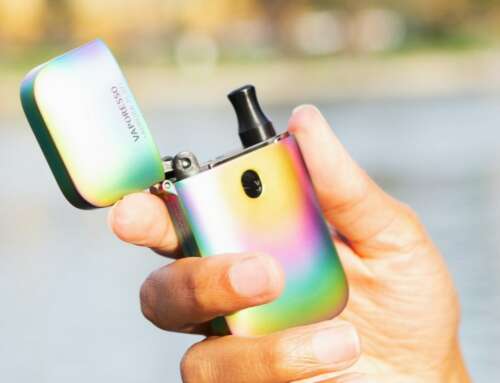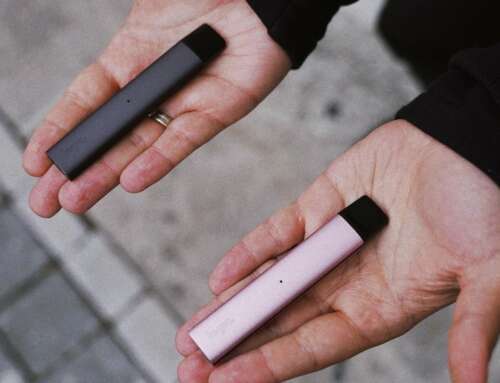Australia’s tough tobacco regulations are acting as a catalyst for the industry to develop sophisticated marketing practices. These companies are gaming the system by anticipating regulatory impact and then using unregulated marketing elements to overcome it.
Australia has been a guiding light for countries looking to improve public health through the effective regulation of tobacco, which remains the world’s biggest cause of preventable illness and death, and still kills around 15,000 Australians annually.
December 2012 saw the implementation of Australia’s innovative plain packaging legislation, this was followed by four 12.5% annual tobacco tax excise increases. As a result the number of Australian smokers has fallen to a record low.
However the tobacco industry has used several strategies, including price reduction, brand differentiation and promoting the idea of healthier cigarettes, to undermine Australia’s new regulatory environment.
Pricing for packets
To offset price hikes manufacturers have expanded lower priced product ranges, with new ultra low priced brands. One example of this is the British American Tobacco Australia’s (BATA) Just Smokes, which sells for around 70% of the premium brand prices. BATA has also shifted Rothmans, previously a premium brand, into the economy segment by cutting its price by more than 30%.
Another pricing initiative is twin pack promotion. Most consumers recognise that progressively larger packs offer progressively lower unit prices – a lower cost per single item or single pack.
This used to be true for tobacco, with the largest cartons (usually with 200 cigarettes) offering best value. However, since 2012 discounted twin packs represent best value.
A supermarket twin pack, per cigarette price, is up to 10% cheaper than single packs – effectively discouraging single pack purchases. Australia’s leading brand Winfield twin pack, per cigarette price, is equal to or below that of larger cartons.
Regulatory price increases are financial deterrents to smoking. The low price branding and discounting strategies in Australia are clear attempts to get around these, and reduce smokers’ financial motivation to quit or cut down.
Heavily discounted twin packs also teach smokers, through financial reward and penalty, to buy twin rather than single packs. This is of particular concern since research shows that larger purchases trigger higher consumption.
In 2014 the industry claimed tobacco consumption had actually increased after plain packaging. While this was disproved, it suggests big tobacco anticipated increased consumption as smokers switched to twin pack purchase behaviour.
New tobacco products and promotions
Plain packaging was expected to restrict tobacco brands. However, after 2012 manufacturers introduced numerous new products, and brand ranges actually expanded.
For example, Australia’s leading brand Winfield supported more than 20 brand variants in 2015-2016 compared to just 12 in 2012-2013. Brand differentiation is a proven marketing approach for generating greater sales, with each variant targeting a specific consumer market segment.
Since plain packaging was introduced, tobacco companies have varied the names of brands as well. Names have evolved to include the information previously covered by packaging, such as colour and new product features. For example, Dunhill Infinite is now Dunhill Infinite White + Taste Flow Filter.
Today around 80% of Australia’s leading brands’ variant names include a colour, compared to less than half before plain packaging. Tobacco companies are also using colours to mislead consumers that certain product ranges are “healthier” options.
A universal colour code has been promoted by the industry in which smokers interpret lighter colours (white, silver, gold, yellow and blue) as being less harmful, and darker colours (red and black) as more harmful. Before plain packaging colour hues were a pack design component, now the myth of healthier tobacco options is perpetuated by colour names. This is disturbing from a public health perspective as it represents industry efforts to lessen smokers’ health motivations for quitting.
The effects of clever marketing
Australia’s tobacco regulations have significantly reduced smoking. However, their impact would be greater without unscrupulous industry initiatives to overcome and thwart them.
Industry response to plain packaging and excise increases have not been simple marketing efforts to increase sales, but illustrate cynical attempts to reduce financial and health motivations for quitting, and to encourage smokers to smoke more. Australian regulators, and those in other countries, should therefore consider further regulation.
Research suggests that future effective controls might include:
- Introducing a standard fixed per stick price for all cigarettes – preventing differentiation by price and cheaper brand options
- Prohibiting price variation by pack size – preventing volume discounting or twin pack promotion that encourage smokers to make larger purchases and smoke more
- Restricting pack size to a maximum of 10 or 20 cigarettes to limit increased consumption associated with larger pack sizes
- Banning colour variant names – removing colour-health connotations
- Restricting brand variant ranges, for example to one variant or representation per brand, to limit the way tobacco companies use differentiation to increase sales.
The tobacco industry is committed to gaming regulations, like plain packaging and tax excise increases, and developing approaches to undermine their impact. However, the Australian government is equally committed to reducing the national adult daily smoking rate to 10% by 2018. The additional tobacco controls outlined above should help the government achieve this.
– Steven Greenland
This article first appeared in The Conversation.
Image from Unsplash








Leave A Comment